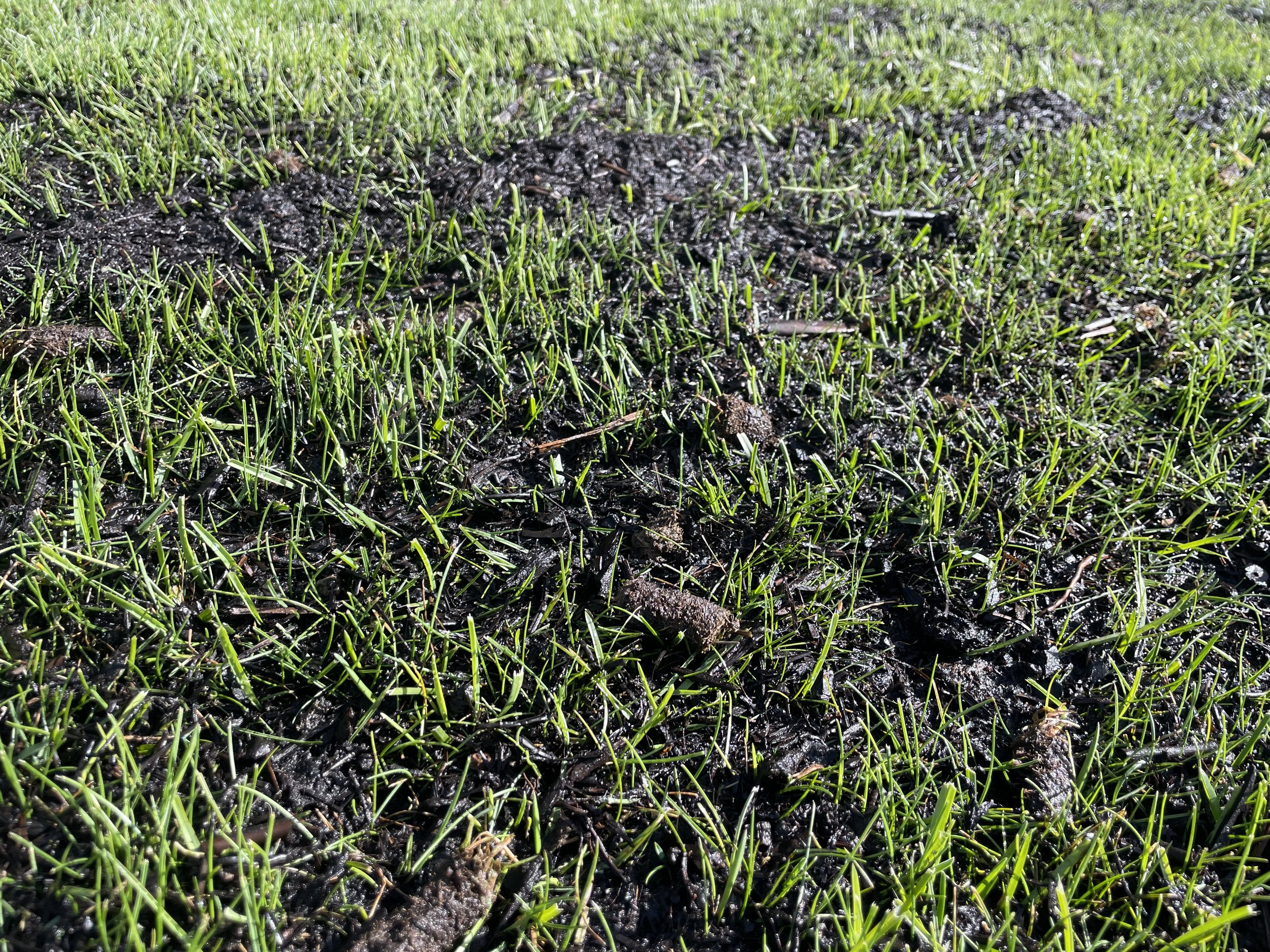
LET’S BRING
YOUR LAWN TO LIFE
Lawn damage repaired in days!
Core aeration and compost topdressing rapidly improves the soil, making your lawn a safe and healthy place to play. This process yields compounding results which over time reduce inputs and labor.
Build Your Plan
Irrigation Start-up
Core aeration
Topdressing
Compost tea
Organic fertilizer
WE’RE IN IT FOR THE LAWN GAME
Our regenerative organic approach builds soil and creates a closed loop nutrient cycle. When the grass get’s mowed, the clippings are broken down by microbes and converted into plant food. Over time, less fertilizer is needed.
THE SOIL BUILDING PROCESS
Core aerator pulls up plugs of compacted soil, improves water, air, and nutrient flow to roots
Compost is spread to fill in aeration holes and provide nutrients to lawn and food for microbes
Compost tea is applied monthly to rapidly increase microbe populations
TRANSFORMING SAND INTO SOIL
Each time we aerate and top dress compost we’re improving soil structure. This cyclical process of pulling up plugs of compacted sand and filling the holes in with compost quickly improves air flow, nutrient and water exchange, and replaces sand with organic matter (food for microbes).
VISIBLE PROGRESS IN DAYS
Day 1. Aerate and top dress compost
Day 14! (look at the neighbors lawn by the fence for comparison)

Build Your Plan
➡Irrigation Start-up
➡ Core Aeration
➡ Topdressing
➡ Over seeding
➡ Compost tea
➡ Organic fertilizer

WHAT ABOUT DE-THATCHING?
Early fall is the best time to De-Thatch
In the springtime, grass may still be dormant. Just because it’s brown doesn’t mean it’s dead.
De-thatching is an intense process, and can do more damage than good if timed improperly.
De-thatching in the spring exposes the soil surface when weed seeds are airborne and can invade the lawn.

Fertilizer Matters
ORGANIC
Organics nitrogen promotes steady lawn growth, deep root development and resilience to stress. Microbes break it down gradually, and deliver to plants as needed.
vs
SYNTHETIC
Synthetic nitrogen yields rapid, lush growth but may lead to shallow roots, increased susceptibility to disease, and chemical imbalance over time due to salt build up.
STRUGGLING TO GET GOOD RESULTS WITH ORGANIC FERTILIZER?
Nutrients from organic fertilizers aren’t always available to the plants as food. If you have a lack of soil biology, you'll have a lack of soil fertility. Applying compost tea will introduce microbes to breakdown organic material and deliver it to the plants.
Conventional Approach
Landscapers bag clippings when mowing to prevent the thatch layer from building
Grass clippings are hauled off site, meaning more fertilizer will need to be added.
Lack of organic matter and soil biology creates dependency on synthetic fertilizer
Lawn is susceptible to hotspots from dog urine or uneven watering
Compacted soil discourages deep root growth, leading to poor water retention, uneven growth
More fertilizer is required annually to keep lawns green
Accelerated’s Approach
Only use mulching mowers and leave clippings as food for microbes, don’t bag!
Clippings get broken down by microbes and turned into plant food, no thatch layer builds
Microbes break down organic matter and maintain plant health without chemicals
All areas of lawn are connected by a mycelium network, evenly distributing water and nutrients
Movement of microbes in the soil reduces compaction, improves water and airflow to roots
A closed loop cycle is formed where grass clippings are converted to nutrients








